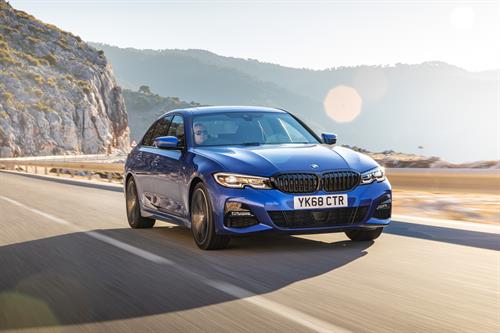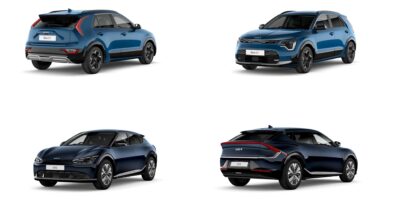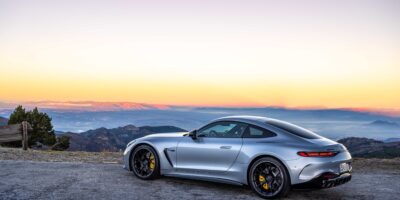The BMW 3 Series Saloon has had an unparalleled reputation both for its quality, and supreme handling in the premium midsize segment for more than 40 years and this, the seventh generation, raises the bar even higher.
When the first BMW 3 Series was launched in 1975, it revolutionised the segment and became BMW’s most successful model. The saloon is the core of BMW 3 Series range (of which over 15 million units have been sold worldwide) and is regarded as the heartbeat of the BMW brand. With revised styling, superior driving dynamics, exceptional efficiency and innovative features, this latest iteration opens an exciting new chapter in 3 Series progression.
Exterior design
Precision, clean lines and bold contours are the hallmarks of the new 3 Series Saloon, which has had its proportions radically revised. The new car is 85 millimetres longer than its predecessor (at 4,709mm), 16 millimetres wider (1,827mm) and just 1 mm taller (1,442 millimetres). Added to that, its wheelbase has been extended by 41 millimetres to 2,851mm, as has its track widths (front: by 43mm, and rear by 21mm).
At the front, the large BMW kidney grille elements are framed by a single surround and split up by wide bars and link to the headlight units. The customary BMW twin headlights feature the familiar two-way split that is further emphasised by an eye-catching notch in the front apron that rises into the headlight contour.
The bonnet has four contour lines leading to the BMW kidney grille. At its leading edge, it sits flush with the upper edge of the headlights and kidney grille. Both the front foglights and the Air Curtains are integrated into the outer air intakes, which are inserted into the front apron in a horizontal T shape on SE and Sport models. This design was originally developed by the National Advisory Committee for Aeronautics (NACA) for the intake air in jet engines and later became a feature of classical racing cars.
A pair of character lines rise to the rear of the car at door-handle level and a contour line near the side skirts guides the eye to the sculpted rear wheel arches. Another feature is the ‘Hofmeister kink’ – the familiar counter-swing at the trailing edge of the side window graphic. A BMW hallmark, this element of the window frame is now integrated into the C- pillar, giving the rear doors a “freestanding†glass edge.
Surface contours lead into the rear apron from the side skirts and extend in an upwards movement via the rear lights up to the spoiler lip on the boot lid. At the rear slim, darkened light units house L-shaped taillights.
From launch, customers can choose from two non-metallic colours and ten metallic shades including the brand new Portimao Blue metallic which is unique to the top-selling M Sport model.
Interior
The interior is designed to accentuate the spaciousness of the cabin and the driver- focused cockpit. The instrument panel has a modern, light look with horizontal lines, high- quality electroplated trim strips and contours that extend into the doors.
The newly-designed instrument cluster and Control Display form a large surfaced screen grouping, while the controls not included in these units are arranged into clearly structured function panels.
Displays and buttons for the air conditioning are at the centre of the instrument panel while the light functions are operated via a panel of buttons next to the steering wheel. The start/stop button for the engine is now positioned in a control panel in the centre console that houses the gearshift lever or newly designed selector lever, the iDrive Controller, electromechanical parking brake and the buttons for the Driving Experience Control switch unit.
The range of standard and optional interior trim elements available for the instrument panel and centre console is almost entirely new. As well as open-pore fine wood options, customers can choose from a variety of aluminium trims including a new Aluminium “mesh effect†interior trim.
Increased standard equipment
The entry level SE model features substantially increased standard specification. It includes Adaptive LED headlights with cornering light and eyebrow indicators, BMW Welcome Light Carpet, Interior Ambient Lighting with up to 11 colour settings, Parking Assistant with reversing camera and latest generation reversing assistant, Electric folding mirrors, Three-zone air conditioning and enhanced Acoustic glazing. All 3 Series models benefit from 40:20:40 split folding rear seats and folding rear headrests as standard. The entry model features a leather Sport steering wheel and BMW Live Cockpit plus, with its 8.8-inch central instrument cluster.
The SE models get line-specific front and rear bumper design, and they also come with exclusive 17-inch light-alloy wheels or optional 18-inch wheels, bespoke door sill strips and LED front foglights.
The Sport model adds exterior features including BMW Individual high-gloss Shadow Line trim for the side window surrounds, plus kidney grille slats and trim elements for the air intakes and rear apron in High-gloss Black. The Sport model’s interior features an interior trim in High-gloss Black and Sports seats for the driver and front passenger. The Sport model also comes equipped with 18-inch alloy wheels, Vernasca leather seats and Front heated seats.
The top-selling M Sport model features particularly large air intakes as well as a different design for the front bumper, side skirts and rear apron. It also includes BMW Individual high-gloss Shadow Line trim, Kidney grille slats in High-gloss Black, air intake trim in High-gloss Black and a rear diffuser in Dark Shadow. Inside there are Sports seats, an M leather steering wheel, an anthracite-coloured BMW Individual headliner and an interior trim in Aluminium Tetragon, new Vernasca leather seats trims and heated front seats. The M Sport model will also feature as standard the new BMW Live Cockpit Professional with a 12.3-inch digital instrument cluster, 10.3-inch central instrument cluster and BMWs brand new Operating System 7.0 with the Intelligent Personal Assistant.
Engines and powertrain
The upgraded four-cylinder engines from the BMW Group’s Efficient Dynamics family are used in the BMW 330i and the BMW 320d. The 3 Series Saloon will feature a new- generation six-speed manual gearbox and the eight-speed Steptronic transmission. As an alternative to rear-wheel drive, the BMW xDrive all-wheel-drive system will also be available for the new BMW 320d at launch.
Systematic upgrades have been made to the BMW TwinPower Turbo technology for the two-litre, four-cylinder diesel engines in the BMW 320d and BMW 320d xDrive models. It now includes multi-stage turbocharging, which brings increased efficiency across all engine speeds. The revised diesel has a maximum output of 190hp and a peak torque of 400Nm enabling the BMW 320d to accelerate from zero to 62 mph in 7.1 seconds (automatic: 6.8 seconds) while the BMW 320d xDrive can get from zero to 62mph in 6.9 seconds. Average fuel consumption is 54.3-56.5mpg (automatic: 53.3-55.4mpg) for the 320d and 49.6-52.3mpg for the 320d xDrive. The 320d’s CO2 emissions are 115g/km (automatic: 110g/km) while the 320d xDrive’s CO2 emissions are 118g/km.
| Model | Power output (hp) | Peak Torque (NM) | Acceleration 0-62mph | Top Speed (mph) | Fuel consumption combined (mpg) |
CO2 emissions (g/km) |
Price from |
| BMW 318d | 150 | 320 | 8.4 (8.3) | 140
(139) |
55.4-58.9
(52.3-55.4) |
113 (109) | £32,450 |
| BMW 320d | 190 | 400 | 7.1 (6.8) | 149 | 54.3-56.5
(53.3-55.4) |
115 (110) | £33,610 |
| BMW 320d
xDrive |
190 | 400 | (6.9) | (145) | (49.6-52.3) | (118) | £36,800 |
| BMW 330d | 265 | 500 | (5.5) | (155)* | (46.3-47.9) | (133) | £39,630 |
| BMW 320i | 184 | 300 | (7.1) | (149) | (41.5-43.5) | (129) | £32,220 |
| BMW 330i | 258 | 400 | (5.8) | (155)* | (40.4-41.5) | (134) | £37,660 |
| BMW 330e | 252 (293 with XtraBoost) |
420 | 6.0 | 143 | 138 | 39 | TBC |
*Electronically limited








